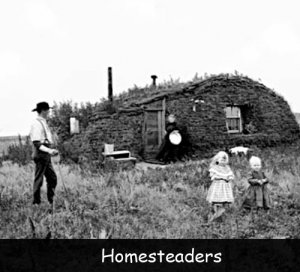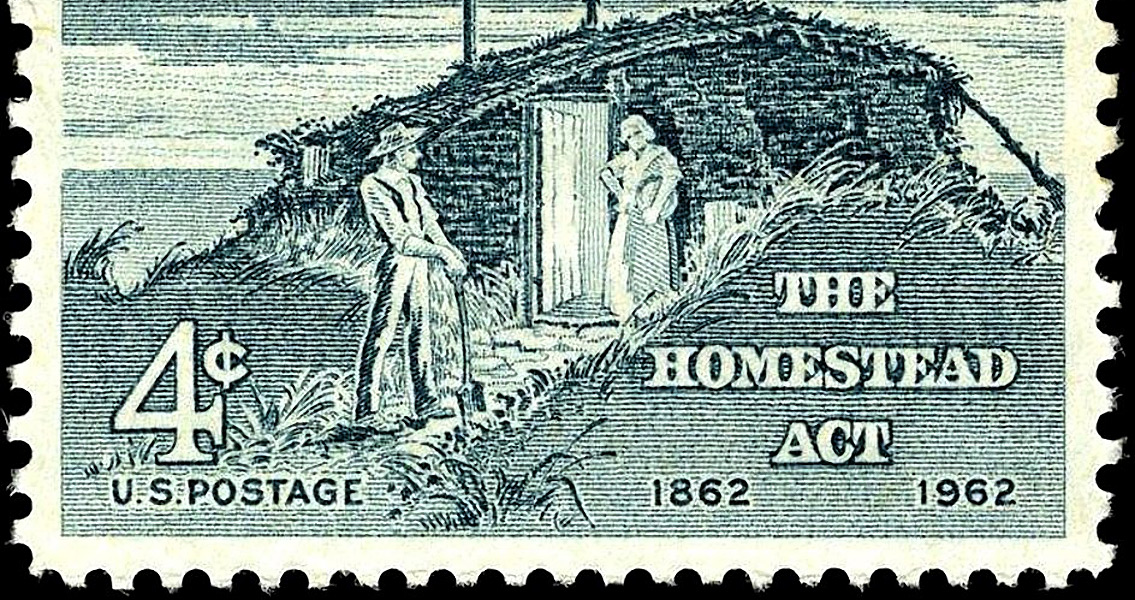The Homestead Act
"Signed into law by President Abraham Lincoln on May 20, 1862, The Homestead Act encouraged Western migration by providing settlers 160 acres of public land. In exchange, homesteaders paid a small filing fee and were required to complete five years of continuous residence before receiving ownership of the land. ... The Homestead Act led to the distribution of 80 million acres of public land by 1900."
Sod Houses
"Sod houses were the successors to the log cabin during frontier settlement of the U.S. (and Canada).The prairie lacked standard building materials such as wood or stone; however, sod from thickly-rooted prairie grass was abundant. Prairie grass had a much thicker, tougher root structure than modern landscaping grass..."
Sylvester Rawding house, Kansas, 1886

The Chrisman sisters, Nebraska, 1886

Unknown, Kansas

Blacksmith shop, West Union, Nebraska ( Larger Picture )
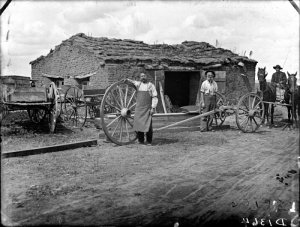
"Signed into law by President Abraham Lincoln on May 20, 1862, The Homestead Act encouraged Western migration by providing settlers 160 acres of public land. In exchange, homesteaders paid a small filing fee and were required to complete five years of continuous residence before receiving ownership of the land. ... The Homestead Act led to the distribution of 80 million acres of public land by 1900."
Sod Houses
"Sod houses were the successors to the log cabin during frontier settlement of the U.S. (and Canada).The prairie lacked standard building materials such as wood or stone; however, sod from thickly-rooted prairie grass was abundant. Prairie grass had a much thicker, tougher root structure than modern landscaping grass..."
Sylvester Rawding house, Kansas, 1886

The Chrisman sisters, Nebraska, 1886

Unknown, Kansas

Blacksmith shop, West Union, Nebraska ( Larger Picture )




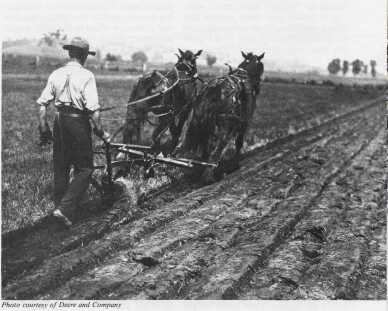




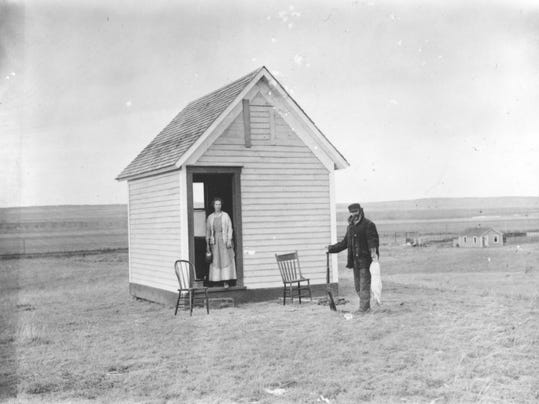
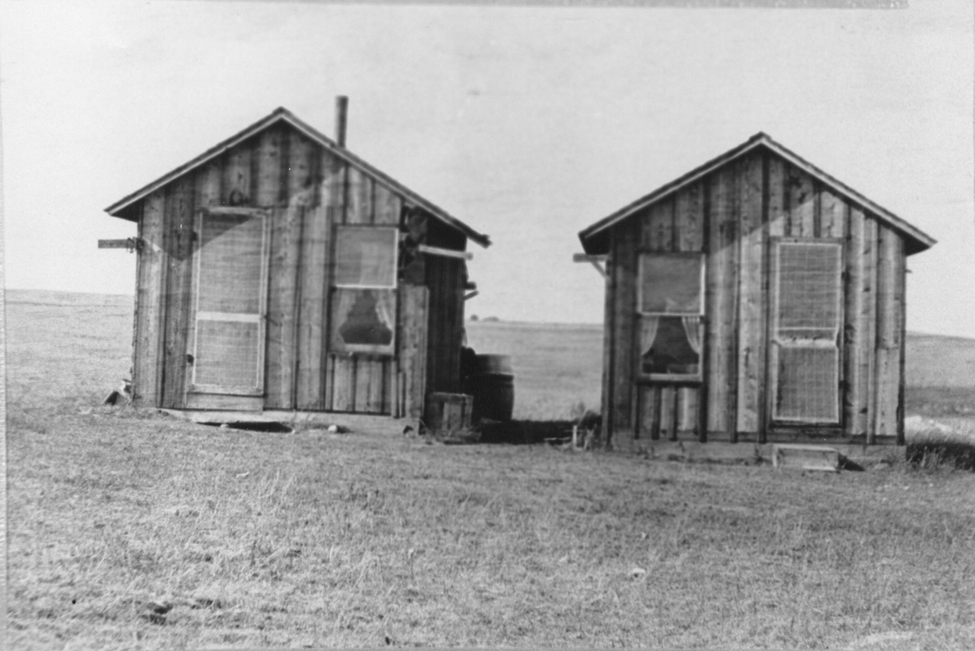

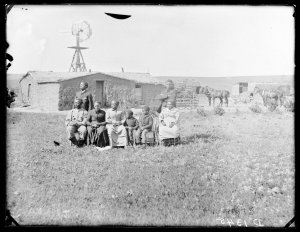
:max_bytes(150000):strip_icc():format(webp)/sod-526304832-crop-589e23785f9b58819ce33d07.jpg)

